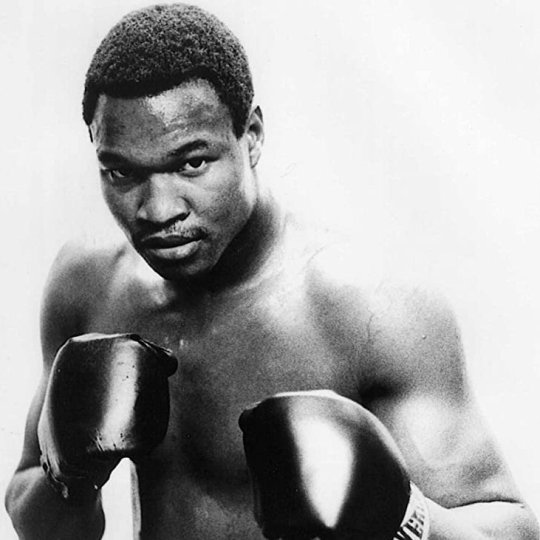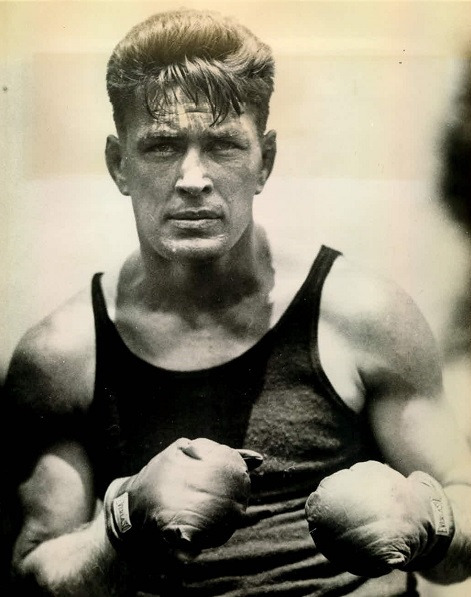#charles walcott
Explore tagged Tumblr posts
Text
Throwback Thursday: The Wheeler Shale
Did you think we were done talking about Charles Walcott?

Not only did Walcott discover the Burgess Shale but 6 years prior he had gone out to western Utah and discovered yet another Cambrian lagerstatten, the Wheeler Shale.

Together with the Marjum and Weeks Formations, the Wheeler Shale is the most fossiliferous and best exposed sequences of Middle Cambrian rocks in North America. That is up to 2,000ft of rock exposure. Take that Burgess Shale. It is most famous for its prolific agnostid (tiny trilobites, like fingernail-sized)

and Elrathia kingii fossils.

Detailed work shows there are at least 10 lagerstatte sequences that were deposited by turbidites and mudslides during high water stands in a deep sea environment.
It also contains many other animals found in the Burgess Shale such as Hallucigenia,

Wiwaxia,

Choia,

and Sidneyia.

Fossilize you later!

#paleontology#fossils#fun facts#history#cambrian period#cambrian explosion#charles walcott#utah#trilobite#science#science education
21 notes
·
View notes
Text

madelame: still wrapping my head around there being 2 days left of this 7 year journey. i love my friends 💘
#camila mendes#kj apa#cole sprouse#lili reinhart#madelaine petsch#vanessa morgan#casey cott#charles melton#karl walcott#riverdale#bts riverdale
186 notes
·
View notes
Text

Charles Melton, Casey Cott and Karl Walcott
83 notes
·
View notes
Text
youtube
Ezzard Charles vs Jersey Joe Walcott 3 - July 18, 1951
Two of the greatest boxers to ever do it!
In 1951, Ezzard Charles is at the top of the boxing world. He's on a legendary run that sees him handing arguable heavyweight GOAT up to that point, Joe Louis, his first loss since 1936. Not to mention he had run through several other legends of the day, Archie Moore, Jimmy Bivins, Joey Maxim,Lloyd Marshall, Gus Lesnevich and Charley Burley. Not to mention, 2 wins over Jersey Joe Walcott himself. He'd lost one fight (against Elmer Ray) in the previous 8 years, which is only more impressive when you realize that means he had gone something like 42-1 over that span.
Jersey Joe Walcott was a top contender looking for that big signature win. He had already failed in two attempts against Charles and two against Joe Louis. He had plenty of great wins, with a similar roster of opponents to Charles, but he spent a lot of his years trading wins and losses at the top end. Until 1951, where he is given one final shot at the upset to win the illustrious heavyweight championship of the world.
5 notes
·
View notes
Text
Jazz at Massey Hall: A Time Capsule of Bebop Brilliance
Introduction: In the annals of jazz history, certain concerts have attained legendary status, capturing the essence of an era and the genius of its musicians. “Jazz at Massey Hall,” recorded on May 15, 1953, at Massey Hall in Toronto, Canada, is one such milestone. This live album, credited to “the Quintet,” features an extraordinary gathering of bebop titans — Dizzy Gillespie, Charlie Parker,…

View On WordPress
#Bud Powell#Charles Mingus#Charlie Chan#Charlie Parker#Classic Albums#Dizzy Gillespie#Jazz at Massey Hall#Jersey Joe Walcott#Lennie Tristano#Max Roach#Oscar Pettiford#Rocky Marciano#The Quintet
5 notes
·
View notes
Text










Heavyweight Icons
#max baer#joe louis#joe frazier#ezzard charles#jersey joe walcott#sonny liston#floyd patterson#larry holmes#jack dempsey#icons#boxing#sports#icon#heroes#hero#gene tunney
4 notes
·
View notes
Text
Rocky Marciano: A Life Story (2004) | Full Movie | Marino Amoruso
youtube
#Rocky Marciano#boxing#boxer#Jersey Joe Walcott#Joe Louis#Roland La Starza#Carmine Vingo#Archie Moore#Italy#Italian American#Italian Americans#Italian American Stereotypes#Undefeated#Undefeated Boxer#Undefeated Boxers#Heavyweight Boxers#Ezzard Charles#Jack Dempsey#sports#athlete#Italian American heroes#Brockton Massachusetts#Brockton BlockBuster#Retired Undefeated#Joe DiMaggio#Muhammad Ali#Angelo Dundee#Deaths by Plane Crashes#Youtube
0 notes
Note
Hii i needed some classic book recommendations even tho im currently reading crime and punishment by fyodor dostoevsky cant seem to finish it reader's block ig if thats a thing? So im just tryna find books which would get me back at reading. Greek/classic Literature/ dark academia/ classic thriller and mystery into these stuff right now so yeah!
Sorry for sending such a big ask lol.
Hey Anonie. No problem lol. Now, I haven't read all those I'm about to list, but I know people (and have read people) that have and like them greatly so: (in no particular order)
Northanger Abbey by Jane Austen
Mansfield Park by Jane Austen
Jane Eyre by Charlotte Bronte
Wuthering Heights by Emily Bronte
The Tenant of Wildfell Hall by Anne Bronte
Dracula by Bram Stoker
Great Expectations by Charles Dickens
Frankenstein by Mary Shelley
The Secret History by Donna Tartt
Hamlet by William Shakespeare
Macbeth by William Shakespeare
Othello by William Shakespeare
Aurora Leigh by Elizabeth Barrett Browning
The Duchess of Malfi by John Webster
The Bakkhai by Euripides (Anne Carson translation)
Medea by Euripides (I unfortunately don't have a translation to recommend)
The Oresteia by Any of the 3 Greek tragedians Honestly (see above)
The Iliad by Homer (Fagles translation)
The Odyssey by Homer (Fagles translation)
The Aeneid by Virgil (Fagles translation)
Omeros by Derek Walcott
Wise Children by Angela Carter
The Remorseful Day by Colin Dexter
Bleak House by Charles Dickens
Absalom, Absalom! by William Faulkner
The Great Gatsby by F. Scott. Fitzgerald
The Maltese Falcon by Dashiell Hammett
Vanity Fair by William Makepeace Thackeray
The Woodlander by Thomas Hardy
Adam Bede by George Eliot
To the Lighthouse by Virginia Woolf
Middlemarch by George Eliot
Mill on the Floss by George Eliot
Romola by George Eliot
Tess of D'Uberville by Thomas Hardy
The Scarlet Letter by Nathaniel Hawthorne
The Sun Also Rises by Ernest Hemingway
A Farewell to Arms by Ernest Hemingway
The Theban Trilogy by Sophocles
The Turn of the Shrew by Henry James
Daisy Miller by Henry James
Lolita by Vladimir Nabokov
Going After Cacciato by Tim O'Brien
The Fall of the House of Usher by Edgar Allan Poe
The Mystery of the Rue Morgue by Edgar Allan Poe
The Tell-Tale Heart by Edgar Allan Poe
The Cask of Amontillado by Edgar Allan Poe
King Lear by William Shakespeare
The Strange Case of Dr. Jekyll and Mr. Hyde by Robert Louis Stevenson
The Hearts and Lives of Men by Fay Weldon
Mrs. Dalloway by Virginia Woolf
Ulysses by James Joyce
Beloved by Toni Morrison
@maryoliverdotcom @memory-the-unconscious do yall have any suggestions??
#dark academia#dark acamedia#dark acadamia aesthetic#dark academia vibes#dark academia literature#dark academia lifestyle#dark academia books#dark academia aesthetics#dark academia aesthetic#classics#classic literature#classic lit#classic books#classical literature#litblr
12 notes
·
View notes
Text
☆-- ɪɴᴛʀᴏᴅᴜᴄᴛɪᴏɴ ᴘᴏꜱᴛ --☆
Hi! I'm Val, I'm a random guy in multiple fandoms such as Welcome Home,Helluva boss,Hazbin hotel,Dead Plate, Deltarune, Undertale and so many more.I sometimes like to make theories on many topics in the fandoms I've listed, mostly in Welcome home.
I'm a massive fan of Gothic literature and poetry in general. My favourite examples of these are
poetry:
“Shall I Compare Thee To A Summer’s Day?” by William Shakespeare
“Trees” by Joyce Kilmer
“Love After Love” by Derek Walcott
“Mother To Son” by Langston Hughes
“A Smile To Remember” by Charles Bukowski
Gothic literature:
Frankenstein by Mary Shelley
The Strange Case of Dr. Jekyll and Mr. Hyde by Robert Louis Stevenson
The Castle of Otranto by Horace Walpole
Dracula by Bram Stoker
The Turn of the Screw by Henry James
~------------------------☆----------------------------~
My music taste mainly consists of:
-Will Wood
-That Handsome Devil
-Oingo Boingo
-Alex G
-TvGirl
-Mitski
-The Smiths
-Frank Sinatra
-Dean Martin
-Tiny Tim
-Teenage Disaster
-Tom Lehrer
~------------------------☆----------------------------~
Thank you for reading!!
#introduction#fandoms#music#poetry#gothic#hazbin hotel#jekyll and hyde#helluva boss#undertale#deltarune#welcome home#theorist#frank sinatra#frankenstein#dean martin#SoundCloud
7 notes
·
View notes
Text










Meet Hallucigenia, the Cambrian critter that will bend your brain! 😮🧠 Decades of head-scratching ensued during its discovery. 🔍 Was it upside down? Inside out? 🤔 A figment of Walcott's overactive imagination? 💭 Swipe through this post to dive 🥽 into the fascinating story of its discovery!
📸Image credits:
Charles Walcott - Wikimedia Commons
Simon Conway - Sean Carroll's Mindscape
Hallucigenia - Matteo De Stefano/MUSE , Wikimedia commons
Hallucigenia fossil - Han Zeng, Wikimedia commons
Hallucigenia at each stage of discovery - nixilliustration
Tardigrade - Eye of Science, Science Source
#hallucigenia#cambrian sea#cambrian explosion#cambrian#paleontology#paleo#geology#prehistory#zoology#ancient animals#marine animals#animal#animals#wildlife#fauna#education#science#science facts#discover#study blog#scicomm#research scientist#explore#earth#fossils#evolution#biology#cool science#simps for science
11 notes
·
View notes
Text


Reminder: Vote based on the song, not the artist or specific recording! The tracks referenced are the original artist, aside from a few rare cases where a cover is the most widely known.
Lyrics, videos, info, and notable covers under the cut. (Spotify playlist available in pinned post)
The Only Exception
Written By: Josh Farro & Hayley Williams
Artist: Paramore
Released: 2009
“The Only Exception” the third single from Paramore’s brand new eyes was co-written between Hayley Williams and Josh Farro at a time when the band was a quintet, the song is a soft ballad, which provides musical diversity to the album. Hayley Williams explained to Kerrang! in 2009: “I’ve never written lyrics like this before. The first verse is about where I think the fear to be open or vulnerable started. Ever since the first story in Kerrang!, everyone has known about my family issues and domestic whatever, it’s something that’s kinda stayed with me and I’ve learned from. I played this song to my mom and there were tears. It was kind of embarrassing.” Hayley Williams told Alternative Press in 2010: “This is the first love song I’ve ever written. And even if I’ve tried in the past, this is the first one that I’m really proud of. I like that I was able to express the fact that I have always been really afraid of love – and I still am at times – but the excitement and the hope that it exists is still very evident in the lyrics. So it’s not like I’m a total cynic! Love is a good thing, kids.” In terms of its success as a single, it notably reached 24th on the US Billboard’s Top 100 and 31st on the UK’s Single Chart.
[Verse 1] When I was younger I saw my daddy cry And curse at the wind He broke his own heart and I watched As he tried to reassemble it And my momma swore that she would Never let herself forget And that was the day that I promised I'd never sing of love if it does not exist [Chorus] But darling You are the only exception You are the only exception You are the only exception You are the only exception [Verse 2] Maybe I know somewhere deep in my soul That love never lasts And we've got to find other ways to make it alone Or keep a straight face And I've always lived like this Keeping a comfortable distance And up until now I had sworn to myself that I'm content With loneliness Because none of it was ever worth the risk [Chorus] Well, you are the only exception You are the only exception You are the only exception You are the only exception [Bridge] I've got a tight grip on reality but I can't Let go of what's in front of me here I know you're leaving in the morning when you wake up Leave me with some kind of proof it's not a dream Whoa-oh-oh [Chorus] You are the only exception You are the only exception You are the only exception You are the only exception You are the only exception You are the only exception You are the only exception You are the only exception [Outro] And I'm on my way to believing Oh, and I'm on my way to believing
youtube
So This Is Love
Written By: Paul J. Smith, Al Hoffman, Mack David & Jerry Livingston
Artist: Ilene Woods & Mike Douglas for Cinderella
Released: 1950
"So This Is Love" is a 1948 song composed by Al Hoffman, Mack David, and Jerry Livingston. It was written for Walt Disney's Cinderella, in which it was performed by Ilene Woods and Mike Douglas. It is sung by the characters of Cinderella and Prince Charming as they dance with each other at the ball. Composed in 3/4 time (also known as waltz time), a secondary title, "The Cinderella Waltz", appears in parenthesis next to or beneath the song's main name on many editions of sheet music. Prior to the Hoffman, David, and Livingston trio joining the film, songs for Cinderella were written by Larry Morey and Charles Walcott, with a song entitled "Dancing on a Cloud" intended for the ball scene. However, their songs would be scrapped. The song does not appear in Disney's 2015 live-action adaptation of the film, replaced instead with 19th-century inspired waltzes and polkas written by cinematic composer Patrick Doyle. Ilene Woods also commercially recorded the song with RCA Victor in 1949 to help promote the film's release the next year. It has since been performed by artists such as Vaughn Monroe, Vera Lynn, James Ingram, and Dave Brubeck, amongst others.
[CINDERELLA] Mmmmmm Mmmmmm So this is love Mmmmmm So this is love So this is what makes life divine I'm all aglow Mmmmmm And now I know [PRINCE] And now I know [CINDERELLA & PRINCE] The key to all heaven is mine [CINDERELLA] My heart has wings Mmmmmm And I can fly [CINDERELLA & PRINCE] I'll touch ev'ry star in the sky So this is the miracle That I've been dreaming of [CINDERELLA] Mmmmmm [PRINCE] Mmmmmm [CINDERELLA & PRINCE] So this is love
youtube
youtube
#paramore#the only exception#hayley williams#cinderella#ilene woods#disney#polls#poll tournament#poll bracket#tournament#bracket#lovesongbracket#round1
19 notes
·
View notes
Text
Throwback Thursday: Charles Walcott and the Burgess Shale
In typical field paleontology fashion, the field season was nearly over when Charles Walcott made the biggest discovery of his life.


It was August 1909 in British Columbia and he was on a steep mountain slope when he found the first fossils of the now world famous Burgess Shale.

Between 1910 and 1924, Walcott collected over 65,000 specimens. He described as many as he could until his death on 1927.


Today, the Burgess Shale is best known for its exceptional preservation of hundreds of soft-bodied animals. At least 172 different animals have been identified including Hallucigenia (pictured above and to the left) which Walcott had reconstructed upside down. To be fair, we have nothing like that alive today and the one he had found hadn't preserved all of the little feet or lobopods.
If you want to know more about the Burgess Shale, you can click this link:
This website is amazing and will take you on a fun filled adventure. It gives you taxonomy of each animal, discovery info, sometimes even a three dimensional rendering of the animal in it's habitat.
#paleontology#fossils#fun facts#geology#history#cambrian period#cambrian explosion#science education#science#charles walcott#burgess shale#british columbia#canadian rockies
18 notes
·
View notes
Text

Ezzard Charles (July 7, 1921 - May 28, 1975) known as “The Cincinnati Cobra,” was a quiet, modest individual who went on to become a world heavyweight champion. Born in Lawrenceville, Georgia, He moved to Cincinnati at the age of nine to live with his grandmother. He began boxing as an amateur in his teens and won the AAU National middleweight title (1939). He turned professional (1940). His early bouts were against the top middleweights and light heavyweights in the world. A clever boxer, throughout his professional career he defeated many of boxing’s greatest fighters including Charley Burley, Joey Maxim, Archie Moore (three times), “Jersey” Joe Walcott, Gus Lesnevich, and Joe Louis.
His professional career was interrupted (1944-45) when he served a stint in the army during WWII. He returned to boxing (1946) and defeated Archie Moore, Lloyd Marshall, and Jimmy Bivins to earn a #2 ranking in the light heavyweight class. He fought a total of five light heavyweight champions, defeating four of them, but never received an opportunity to fight for the division’s title. Many consider him one of the greatest light heavyweight fighters of all time based on his record in that weight class.
He fought for the vacant National Boxing Association heavyweight title (1949) against “Jersey” Joe Walcott and earned a 15-round decision victory. Joe Louis came out of retirement and he defeated him (1950) gaining recognition as the undisputed world heavyweight champion. He successfully defended the title three times before losing it to Walcott (1951).
He challenged Rocky Marciano, losing twice. Marciano referred to their first meeting as one of the toughest fights he ever had. It was the only time a fighter ever lasted a full 15 rounds against the “Brockton Blockbuster.”
He retired from the ring, but financial problems forced him to come out of retirement and fight for two more years (1958-59). He lost 12 of his final decisions, bringing his overall record to 89 wins, 25 losses, and 1 draw. In 1966, he was diagnosed with Amyotrophic Lateral Sclerosis. He was elected to the International Boxing Hall of Fame. #africanhistory365 #africanexcellence
1 note
·
View note
Text







Waptia fieldensis
(temporal range: 510-505 mio. years ago)
[text from the Wikipedia article, see also link above]
Waptia is an extinct genus of arthropod from the Middle Cambrian of North America. It grew to a length of 6.65 cm (3 in), and had a large bivalved carapace and a segmented body terminating into a pair of tail flaps. It was an active swimmer and likely a predator of soft-bodied prey. It is also one of the oldest animals with direct evidence of brood care. Waptia fieldensis is the only species classified under the genus Waptia, and is known from the Burgess Shale Lagerstätte of British Columbia, Canada. Specimens of Waptia are also known from the Spence Shale of Utah, United States.
Based on the number of individuals, Waptia fieldensis is the third most abundant arthropod from the Burgess Shale Formation, with thousands of specimens collected. It was among the first fossils found by the American��paleontologist Charles D. Walcott in 1909. He described it in 1912 and named it after two mountains near the discovery site – Wapta Mountain and Mount Field, other specimens
Although it bears a remarkable resemblance to modern crustaceans, its taxonomic affinities were long unclear. A comprehensive redescription published 2018 classified it a member of Hymenocarina (which contains numerous other bivalved arthropods) within Mandibulata.
9 notes
·
View notes
Text

Jeff Bridges and Gary Busey in The Last American Hero (Lamont Johnson, 1973)
Cast: Jeff Bridges, Valerie Perrine, Geraldine Fitzgerald, Gary Busey, Ned Beatty, Art Lund, Ed Lauter, William Smith, Gregory Walcott, Tom Ligon, Ernie F. Orsatti, Erica Hagen, Jimmy Murphy, Lane Smith. Screenplay: William Roberts, based on articles by Tom Wolfe. Cinematography: George Silano. Art direction: Laurence G. Paull. Film editing: Robbie Roberts, Tom Rolf. Music: Charles Fox.
All good actors act with their eyes, but I don't know anyone who is better at acting with the lower half of their face than Jeff Bridges. Which is to the good in The Last American Hero, because a lot of the film consists of Bridges as Junior Jackson behind the wheel of a race car, his eyes covered with goggles and only the thin slit of his mouth and the determined jut of his jaw visible. But Bridges is also called on to suggest desire (mouth softened, jaw less firmly set), defiance (mouth tense, jaw forward), and defeat (mouth downturned, jaw in retreat). This is not to say that the eyes as well as the voice don't come into play. Bridges has a tour de force scene in the middle of the picture when Junior steps into a record-your-voice booth (a fixture made obsolete by, among other things, the cell phone) to compose an oral letter home to his family, each person -- his disapproving mother (Geraldine Fitzgerald), his supportive brother (Gary Busey), and his incarcerated father (Art Lund) -- receiving an appropriate message as the play of emotions is reflected on his face. There's also a lovely aw-shucks moment when Junior, the hillbilly in the flatlands, deals with the desk clerk in a hotel; Bridges never lapses into caricature in the scene. This also seems to say that Bridges dominates the film, which isn't quite true, since the ensemble consists of not only such skilled character players as Fitzgerald, Busey, and Lund, but also Valerie Perrine as Marge, the racing groupie who adds Junior to her list of racing stars she has bedded, Ned Beatty as Junior's first promoter, and Ed Lauter as the promoter who tries to milk Junior of all the cash he can earn. The film's title comes from the profile of racer Junior Johnson that Tom Wolfe wrote for Esquire in 1965, but it feels a bit misleading. There's nothing particularly heroic about Junior Jackson. (The name and many of the biographical details in Wolfe's article were changed, though Johnson himself served as a consultant and technical advisor on the film.) It's less a biopic than an entertaining dip into an American subculture, somewhat glossy in presentation and memorable mostly for its performances.
2 notes
·
View notes
Text
Riverdale 7x14 “Archie the Musical”
After Principal Featherhead (guest star William MacDonald) agrees to let Kevin (Casey Cott) present him with an original musical written by him and Clay (guest star Karl Walcott), Kevin learns the group might not be as into it as he had hoped. Elsewhere, musical rehearsals prompt Archie (KJ Apa) to question what he wants in life, while Betty (Lili Reinhart) and Veronica (Camila Mendes) confront what’s going on between them. Cole Sprouse, Madelaine Petsch, Charles Melton, Vanessa Morgan and Drew Ray Tanner also star.
5 notes
·
View notes